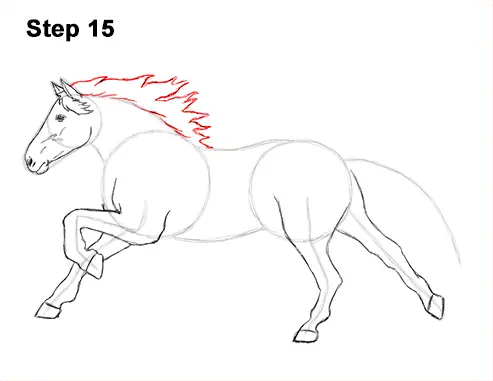
Step 15: Draw the horse's mane along the top part of the neck using a series of wavy lines. Sketch the shape of the whole mane lightly at first. It should consist of a series of wavy, spike-like shapes. Darken the lines when you get the overall shape of the mane right. Be sure to use wavy lines for a flowing wind effect. You can make the mane longer too, if you'd like. Use short, curved lines where the mane attaches to the neck.
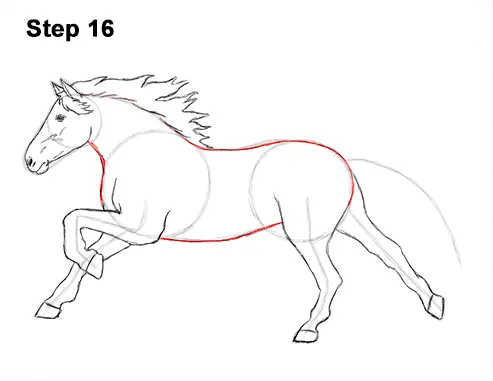
Step 16: Use the remaining shapes and lines to draw the rest of the running horse's body. Simply follow the outer edges of the initial guides as you darken the lines for the body.
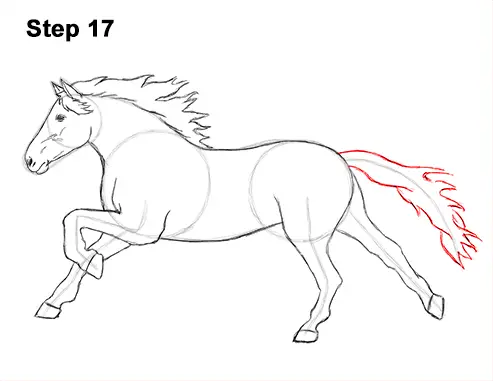
Step 17: Use the line on the rght side as a guide to draw the horse's tail. Follow the path of the guide as you draw it using a series of wavy lines. Just like the mane, draw it as a single shape instead of individual hair strands. You can also make it longer if you'd like.
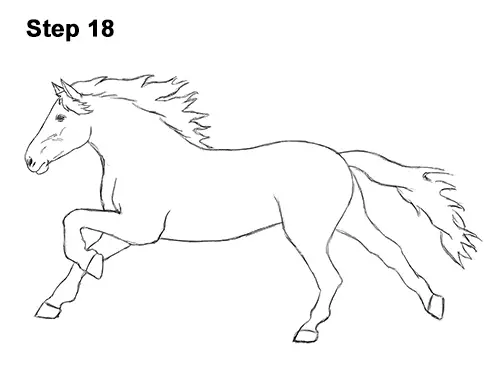
Step 18 (optional): For a cleaner look, erase as much as you can of the initial guide lines. Don't worry about erasing all of the guides. It's okay to leave some behind. Re-draw any final sketch lines that you may have accidentally erased.
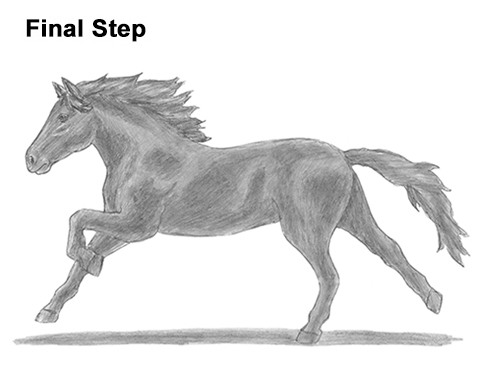
Final Step : Add some shading to your running horse drawing to give it more dimension and volume. Pick the direction of the light source when shading so that the shadows are consistent with it. Don't worry too much about the shading if you're going to add more value to your drawing later on. But if you want your horse to be white and stop after this step, then make these shadow smoother.
Add a cast shadow underneath. This helps ground the horse so it doesn't appear to be floating.
You can add even more value throughout your drawing for extra detail. Shade the mane but use a lighter value across the middle to make it shiny. Use a single dark value throughout the entire body for easier shading. Horses' coats can be a single solid color, have patches or even spots! So shade yours however you'd like.
Add the value lightly at first, then gradually build up to the level of darkness that you want. Use a lighter value along certain areas of the body to make the horse's coat shiny. Vary the pressure on your pencil to get different degrees of tonal value. Try to add the value evenly across the body for a smooth coat and avoid a rough, gritty texture. Shading can be very time-consuming, so be patient and take breaks. You can add the value to different sections of the body at a time to break up the shading process.
Continue adding the value until the entire body is shaded. It's always a good idea to use reference as you draw. If you own a horse, try to duplicate its coat on your drawing! Remember to pause the video after each step to draw at your own pace.
Thanks for watching! Subscribe to the How2DrawAnimals YouTube Channel for a new tutorial every Tuesday.
To learn how to draw popular cartoon characters, visit EasyDrawingTutorials.com.
RELATED TUTORIALS
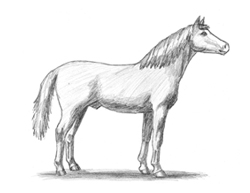 |
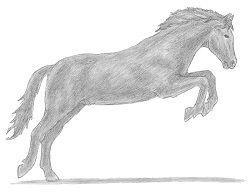 |
 |







